The rise of AI tools has sparked endless talks about how these systems will change our world. But while we are focused on how AI will transform industries or replace jobs, a more subtle shift is already taking place: humans are changing how they think and work to better match AI systems.
The Human Side of AI Adaptation
“I’ve started writing code that’s more AI friendly,” admits one AI researcher in a recent discussion about societal impacts. “That’s crazy.” This small admission reveals something profound about our current moment. We aren’t just teaching AI to be more human – we’re also changing ourselves to better work with AI.
This two-way adaptation isn’t part of most AI discussions. Yet it may be one of the most important trends to watch as AI becomes more embedded in our daily lives.
How We’re Changing Our Thinking
AI systems like ChatGPT, Claude and other large language models can process vast amounts of information quickly. They can read 200,000 words in seconds – something no human can match. This gap in capabilities is causing us to adjust how we approach problems.
Tech professionals are already shifting their workflows. Rather than spending hours researching solutions, many now start by asking an AI for an overview of possible approaches. This saves time but also changes how they build knowledge. Instead of gradually building up expertise through trial and error, they jump directly to possible solutions.
The same pattern appears in writing and creative work. Writers who once spent days crafting outlines now generate multiple drafts with AI assistance and focus their energy on editing and refining. This shifts the creative process from generation to curation.
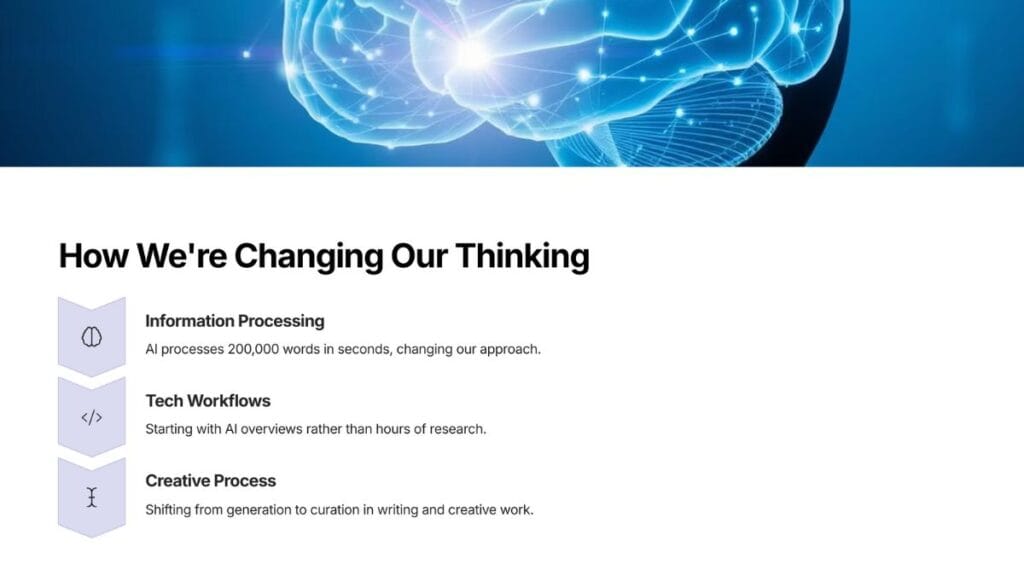
The Emotional Connection
Perhaps more surprising is how quickly people form emotional connections with AI systems. Users report having hour-long conversations about personal matters they haven’t shared with human friends. One user described working through a nine-month disagreement with a friend by talking it through with Claude.
“It presses many of the same buttons that a really close friend would press, but it is not a close friend. It’s a machine,” notes a researcher studying these interactions. “I’m asking for emotional advice from something that fundamentally cannot empathize with me.”
This emotional connection raises important questions. Will we start to prefer AI companions who always have time for us and never judge? How might this affect our human relationships? These questions remain largely unexplored in typical AI coverage.
Identity and Creation
For many people, the act of creating is tied to their identity. As one person put it, “I write in order to think. Getting words down on the page is how I construct my thoughts and my identity.”
This connection between creation and identity explains why some resist AI assistance for certain tasks. A potter explained: “I’m not trying to make the best pot that has ever existed. I’m trying to make my pot. I’m trying to make a gift for someone, and it’ll have my name written on the bottom.”
These personal connections to creation suggest that AI adoption will be uneven. People may welcome AI assistance for tasks they view as purely functional while resisting it for work they see as expressions of identity.
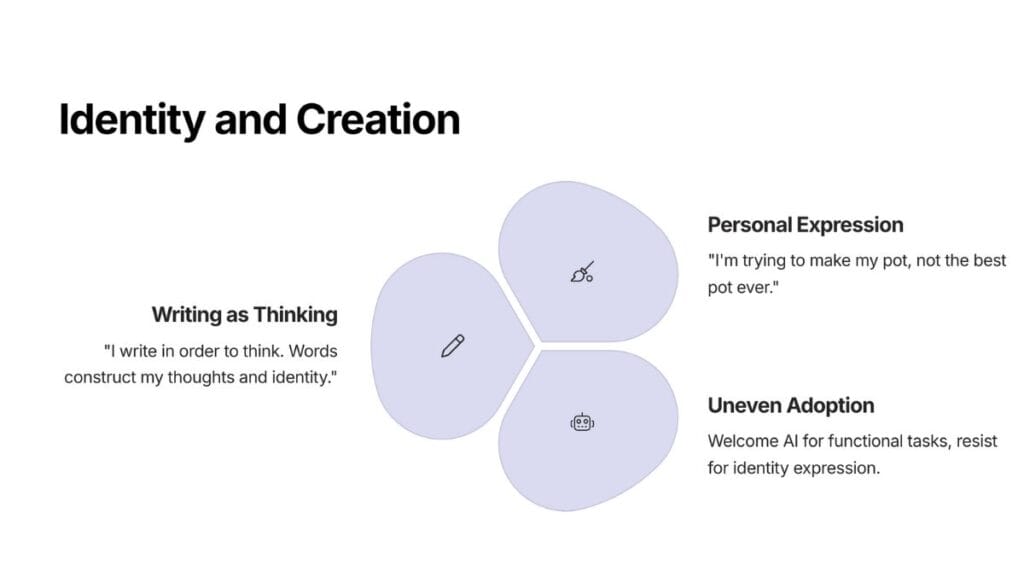
The Value Dilemma
AI systems learn values from the data they’re trained on. As one expert notes, “The model imparts value judgments, and it learns these value judgments from people. But the problem is who are these people and what are their values?”
This raises a practical challenge for organizations. Companies need to decide which values their AI tools should reflect. Should customer service AI match the values of their brand, their customers, or aim for some form of neutrality? These decisions will shape how AI is received and used.
For IT professionals responsible for implementing AI, understanding these value questions is as important as technical expertise. A technically perfect AI that clashes with user values will struggle to gain adoption.
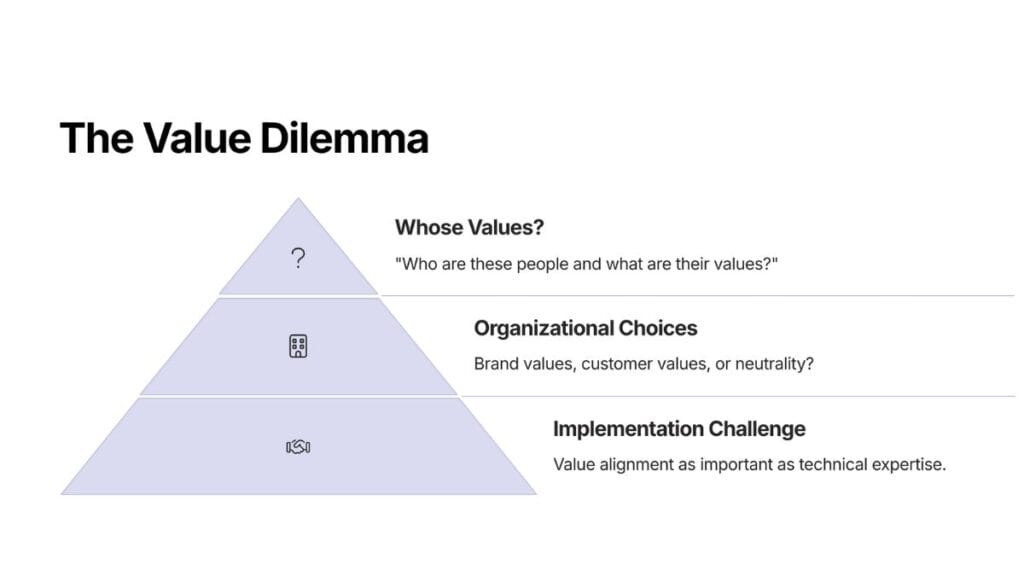
Practical Ways to Adapt
For professionals looking to thrive in this shifting landscape, several approaches can help:
First, track changes in your own thinking. Notice when you’re adjusting your approach to work better with AI tools. This awareness helps you maintain control over how these tools influence you.
Second, set clear boundaries. Decide which tasks benefit from AI assistance and which you prefer to keep fully human. This prevents drift into over-reliance.
Third, build AI literacy in your organization. Help team members understand not just how to use AI tools, but how these tools might change work processes and thinking patterns.
Fourth, create feedback loops. Regularly assess how AI tools are affecting your team’s work quality, speed, and satisfaction. This helps identify both benefits and problems early.
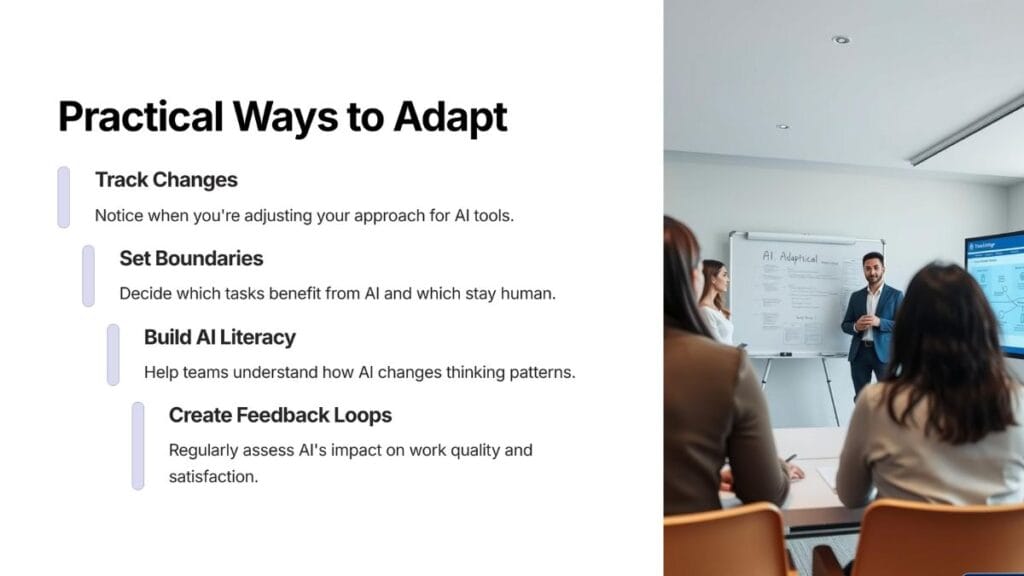
The Path Forward
The relationship between humans and AI will continue to evolve. As AI systems gain new capabilities, humans will adjust their expectations and behaviors. This doesn’t mean accepting all changes uncritically.
“Could we somehow come together as a society and actually have some say over these technologies that are really going to impact everyone’s lives?” asks one researcher. This question needs more attention as AI becomes more powerful.
The most successful individuals and organizations will be those who maintain awareness of this two-way adaptation. They’ll harness AI’s strengths while preserving the uniquely human elements that give their work meaning and value.
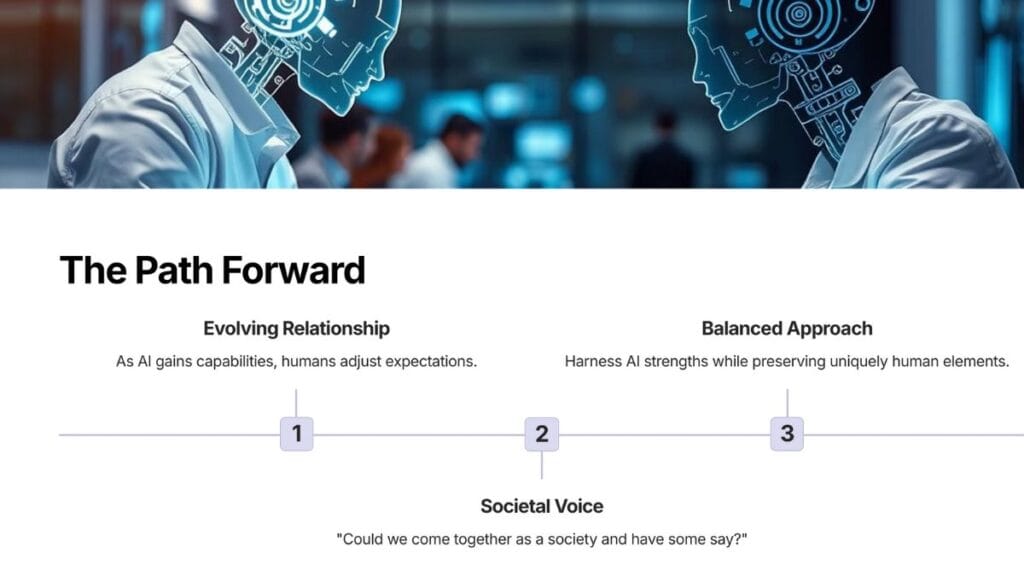
What changes have you noticed in your own thinking as you’ve started working with AI tools? Your experience is part of a broader shift that will shape how these technologies develop in the years ahead.


